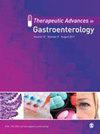High serum levels of ustekinumab are associated with better clinical outcomes during maintenance treatment for inflammatory bowel disease.
IF 3.4
3区 医学
引用次数: 0
Abstract
Background Ustekinumab (UST) is an effective treatment option in Crohn's disease (CD) and ulcerative colitis (UC). However, it still remains unclear if therapeutic drug monitoring could be helpful to guide clinicians. Objectives The aim of our study was to analyze the relationship between UST through levels (USTTL) and clinical outcomes in real-world inflammatory bowel disease (IBD) patients. Design We performed a unicentric retrospective study including patients with IBD under UST treatment with at least one level determination. Methods The following variables were analyzed at the initiation of UST and at each USTTL measurement: clinical response and remission using the Harvey-Bradshaw Index (HBI) for CD and the Partial Mayo Score (pMayo) for UC; biochemical response and remission using fecal calprotectin and C-reactive protein, among others. Two periods were considered: P1 (time between induction and the first determination of USTTL) and P2 (time between USTTL1 and the second determination of USTTL). Results We included 125 patients, 117 with CD. In P1, 62.4% of patients were on subcutaneous maintenance, and the median USTTL1 was 3.1 μg/mL (1.6-5.3). In 44.8% of CD patients (48/117), clinical remission was achieved, with USTTL1 significantly higher than those who did not achieve remission (3.7 μg/mL (2.3-5.4) vs 2.3 μg/mL (1.1-5.2); p = 0.04). In the 46 patients with two determinations, statistically significant differences were found between variables in P2 versus P1: clinical remission (73.9% vs 21.7%; p = 0.001); USTTL (7.2 μg/mL (4.7-11.7) vs 3.4 μg/mL (1.9-6.4); p < 0.001), HBI (4 (4-4.3) vs 8 (4-9); p < 0.001), pMayo (1 (1-3.3) vs 4.5 (3-5); p = 0.042), and corticosteroid use (26.1% vs 41.3%; p = 0.024). Receiver-Operating-Characteristic (ROC) curves were calculated for clinical remission in P2, with USTTL cutoff value of 6.34 μg/mL for clinical remission and a high rate of intensified patients (98%). Conclusion High serum levels of UST were associated with clinical remission during treatment for IBD under intensification treatment, with a cutoff point of 6.3 μg/mL.在炎症性肠病的维持治疗过程中,高水平的乌司替尼与更好的临床疗效相关。
背景乌司他单抗(UST)是克罗恩病(CD)和溃疡性结肠炎(UC)的有效治疗方案。目的我们的研究旨在分析现实世界中炎症性肠病(IBD)患者的 UST 通过水平(USTTL)与临床结果之间的关系。设计我们进行了一项单中心回顾性研究,研究对象包括接受 UST 治疗且至少进行过一次水平测定的 IBD 患者。方法分析了开始UST治疗时和每次USTTL测量时的以下变量:使用哈维-布拉德肖指数(HBI)(CD)和部分梅奥评分(pMayo)(UC)分析临床反应和缓解情况;使用粪钙蛋白和C反应蛋白等分析生化反应和缓解情况。研究考虑了两个时期:P1(从诱导到第一次测定 USTTL 的时间)和 P2(从 USTTL1 到第二次测定 USTTL 的时间)。在 P1 阶段,62.4% 的患者接受皮下注射维持治疗,USTTL1 的中位数为 3.1 μg/mL (1.6-5.3)。44.8%的 CD 患者(48/117)实现了临床缓解,其 USTTL1 明显高于未实现缓解的患者(3.7 μg/mL (2.3-5.4) vs 2.3 μg/mL (1.1-5.2); p = 0.04)。在 46 名进行了两次测定的患者中,发现 P2 与 P1 的变量之间存在显著的统计学差异:临床缓解(73.9% vs 21.7%;p = 0.001);USTTL(7.2 μg/mL (4. 7-11.7) vs 3.3 μg/mL (2.3-5.4) vs 2.3 μg/mL (1.1-5.2);p = 0.04)。7-11.7) vs 3.4 μg/mL (1.9-6.4); p < 0.001)、HBI (4 (4-4.3) vs 8 (4-9); p < 0.001)、pMayo (1 (1-3.3) vs 4.5 (3-5); p = 0.042)和皮质类固醇的使用(26.1% vs 41.3%; p = 0.024)。计算了 P2 临床缓解的接收方操作特征曲线(ROC),USTTL 临界值为 6.34 μg/mL 时,临床缓解和强化治疗患者的比例较高(98%)。
本文章由计算机程序翻译,如有差异,请以英文原文为准。
求助全文
约1分钟内获得全文
求助全文
来源期刊

Therapeutic Advances in Gastroenterology
Medicine-Gastroenterology
自引率
2.40%
发文量
103
期刊介绍:
Therapeutic Advances in Gastroenterology is an open access journal which delivers the highest quality peer-reviewed original research articles, reviews, and scholarly comment on pioneering efforts and innovative studies in the medical treatment of gastrointestinal and hepatic disorders. The journal has a strong clinical and pharmacological focus and is aimed at an international audience of clinicians and researchers in gastroenterology and related disciplines, providing an online forum for rapid dissemination of recent research and perspectives in this area.
The editors welcome original research articles across all areas of gastroenterology and hepatology.
The journal publishes original research articles and review articles primarily. Original research manuscripts may include laboratory, animal or human/clinical studies – all phases. Letters to the Editor and Case Reports will also be considered.
 求助内容:
求助内容: 应助结果提醒方式:
应助结果提醒方式:


